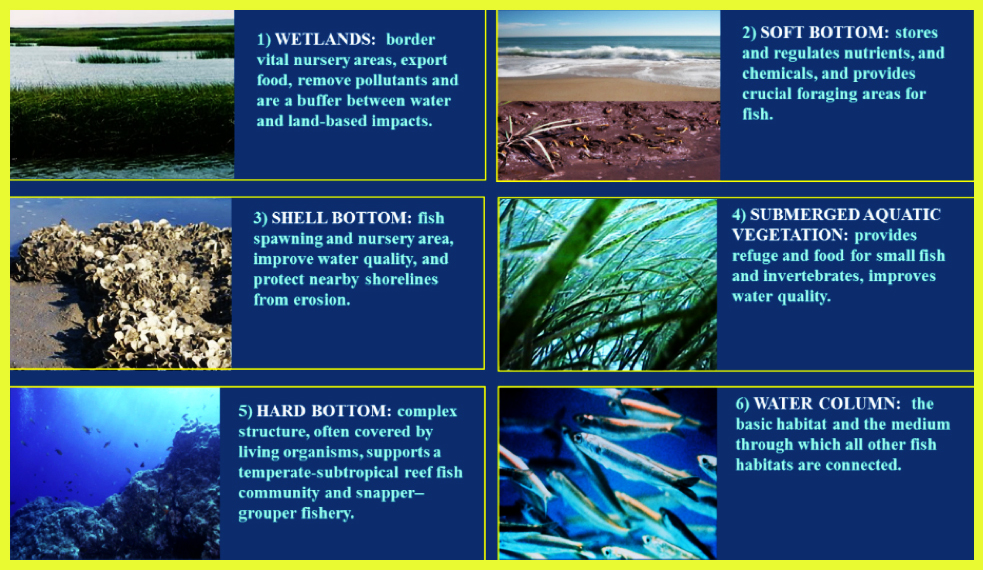Why Should We Protect Coastal Habitats?

Coastal habitats are vital for the state’s important fish species, as well as for fish that migrate along the East Coast.
With over 2.5 million acres of estuarine waters, North Carolina’s Albemarle-Pamlico estuary is the second largest in the continental United States. These waters support a high diversity of aquatic species and six distinct but interdependent coastal habitats, which are vital for important fish species and for fish that migrate along the East Coast.
What are the different types of coastal habitats in North Carolina?
We can describe coastal habitats in simple and general terms or much more precisely. A particular fish’s habitat may be “saltwater” or, for example, “areas where the water has a salt concentration greater than 30.0 parts per thousand, water depth is less than 10 feet, water temperature is between 24 and 32 degrees Celsius, and vegetation covers more than 75 percent of the bottom.”
Normally, one habitat type is not enough to describe where fish live. Most fish utilize multiple habitats over the course of their lives, and many will utilize more than one habitat in a single day.
North Carolina’s Coastal Habitat Protection Plan breaks fish habitat into six groups that are home to important species at many points in their lifecycles: hard bottom, soft bottom, shell bottom, submerged aquatic vegetation, water column, and wetlands. These coastal habitats represent areas where coastal species forage, seek refuge, grow and reproduce.
With numerous fish migrating in North Carolina’s waters throughout their lifecycles, a complex of habitats, from the headwaters to the sea, is essential to ensure survival and growth.

What are the benefits of healthy coastal habitats?
North Carolina’s coastal habitats support a diverse array of fish and a host of other marine organisms, which makes these habitats crucial to the viability of coastal fisheries. Our state, with its billion-dollar commercial and recreational fishing industries, ranks among the nation’s highest seafood producing states. These industries need aquatic species that depend on sufficient quality and quantity of coastal habitats.
Not surprisingly, the lack of recovery of certain stocks of fish can indicate habitat loss and degradation.
In addition to providing a home for fish, coastal habitats — such as wetlands and oyster reefs — also increase the resilience of coastal areas to climate change and sea level rise, improve water quality, and provide valuable economic and ecological services.
Anything else?
Stay tuned as Hook, Line & Science blogposts will continue to dive deeper into coastal habitats to explore their uniqueness and diversity, as well as how managers protect and restore these vital components of our underwater ecosystems.
More information on coastal habitats in North Carolina
Summary compiled by Jacob Boyd
Lead photo by Bill Russ / VisitNC.com
Habitat photos courtesy of Jacob Boyd / NCDMF
The text from Hook, Line & Science is available to reprint and republish, but only in its entirety and with this attribution: Hook, Line & Science, courtesy of Scott Baker and Sara Mirabilio, North Carolina Sea Grant. HookLineScience.com
- Categories:



